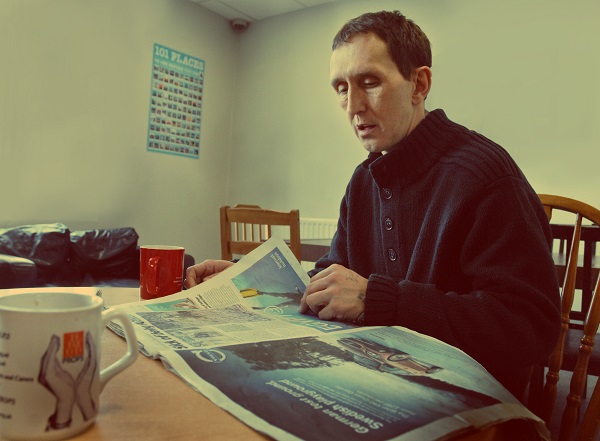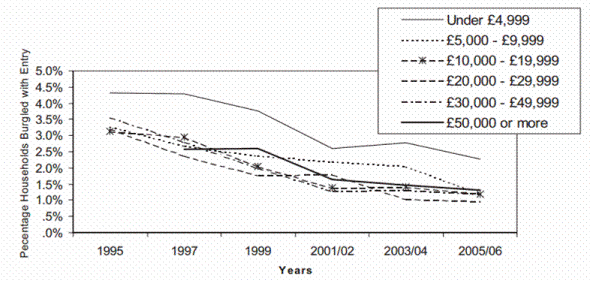People on low incomes are less able to prepare for, respond to and recover from extreme weather events

Credit: JRF/Eloise Ross
On this page:
The impacts of climate change and extreme weather events can affect anyone but poverty is an important determinant of how well people can prepare for, respond to and recover from events like flooding and heatwaves. Poverty is affected by three things: people’s incomes, the costs they face and their ability to meet their material needs. This section focuses on why people on low incomes are less able to prepare for, respond to and recover from climate impacts. These include difficulties obtaining affordable flood insurance, over exposure to some risks, and more impact from material losses due to extreme events than those on higher incomes.
Additional factors can increase the vulnerability of those on low incomes. For example the potential for suffering disproportionate losses in health and wellbeing is greater when people on low incomes are also sensitive to extreme weather due to their age and health, or where they are socially isolated or living in certain types of housing.1 Indeed, a person’s income is often closely tied to other causes of vulnerability such as due to being a lone parent, being in ill-health or having a disability. People in these groups tend to have fewer employment opportunities than others and so tend to be on lower incomes. Low income can in turn exacerbate some of the causes of vulnerability; it is well known that people on lower incomes are more likely to suffer ill-health for both financial and social reasons.2 People experiencing multiple causes of vulnerability are the most extremely socially vulnerable.
The following shows how low incomes can make people less able to prepare for, respond to and recover from climate impacts and related extreme weather.
People on low incomes are more likely to be sensitive to the impacts of heat-wave events than those on higher incomes. There is considerable evidence about the connections between income and health. People on low incomes have fewer choices in terms of goods and services, may suffer lower self-esteem, participate less in social activities and be more likely to experience stress and anxiety than people who have higher incomes.3 Lower participation rates in social activities may indicate poorer social networks and a greater chance for social isolation, one of the factors known to affect the chances of people being affected by heat stress and which helps explain patterns in heat-related deaths,4,5,6 although social links are not always lower than for other income groups.
People on lower incomes are more likely to have increased exposures to temperature extremes. This can come as a result of exposures at work, at home and in the local neighbourhood:
-
Work - some low income occupations involve exposure to heat due to working outdoors, working on tasks which involve high temperatures and/or working in confined spaces.7,8
-
Home – People on low incomes living in accommodation requiring adaptation may not be able to afford the necessary adaptations to cool their homes in summer.9
-
Neighbourhood – People on low incomes are more likely to live in urban areas where temperatures are elevated as a result of the Urban Heat Island effect.10
-
See the 'What actions can be taken?' section on Adapting Buildings for more information.
People on lower incomes are more likely to be private or social tenants and have a lower adaptive capacity to heatwaves because they lack both the resources to act and the power to make changes. The rate of poverty among renters is around three times that of homeowners.11 Social tenants have the lowest incomes of all housing tenures with a gross annual income of £17,600 in 2011/12.12 Private tenant households tend to be on a lower gross annual income than homeowners (£30,100 compared to £40,500), yet on average they pay more on weekly rental payments than home-owners do on mortgages (£164 compared to £141). Given that private tenants already spend around 41% of their income on housing (compared to 30% for social renters and 18% for home owners), this presents a considerable financial disincentive for carrying out additional property level adaptations, even if permission is granted from landlords. This situation is likely to continue – or even increase - in future, given that rates of poverty in the private rental sector are increasing. As of 2011/2 there were almost as many private as social renters in poverty (3.9 million compared to 4.2 million respectively).13
Some of the housing occupied by people on low incomes is prone to overheating in high temperatures and excess cold in low temperatures. Poorly insulated housing has a greater likelihood of exposing occupants to high internal temperatures. Large social housing blocks often suffer from poor ventilation; as a result, older people living alone in high rise flats are particularly vulnerable to heatwaves, especially if they live on top floors.14
-
See the Further Resources section above for more information about some of the problems with different housing types and a short video about overheating in tower blocks in London.
Low income households face a greater risk of burglary compared to other households and this may affect their willingness to take heatwave advice. Although rates of burglary have fallen for all groups, in 2005/6 households earning less than £5000 per annum were still more than twice as likely to be burgled than households earning more than £5000 per annum.15 The second lowest income group also has a greater risk compared to middle income households where the risk is lowest (Figure 1). People living in high crime areas may be unwilling to open their windows to let their homes cool down, especially at night, for fear of burglary. Although fear of burglary is higher than risk of burglary, there is some evidence of a connection between the two.16 Furthermore, people on lower incomes are more likely to have poor security measures in the home and far less likely to have enhanced security measures compared with people on higher incomes.17

Figure 1: Income and burglary risk18
People on low incomes are less likely to have home contents insurance than those on higher incomes.19 In 2006 it was very low income households earning under £10,000pa who were the least likely to have home contents insurance (44%) compared to those earning £10,000pa – £15,000pa (61%) and those on average earnings of £15,000pa – £30,000pa (82%). Thus the very poorest people will find it most difficult to deal with the costs of recovery and replace their belongings after a flood.
People on low incomes may not be able to afford flood resilience measures for their homes. Research on nearly 1,000 respondents in England and Wales found that people overall were not willing to spend more than £500 for flood resilience measures and over a third would not pay anything.20 For those on low incomes this is likely to be out of necessity rather than an active choice.
Those on low incomes are more likely to rent their homes rather than own them– see the tenants and vulnerability section for evidence. Tenants have fewer resources to make property level modifications and have to seek the permission of property owners and managers in order to implement flood protection measures. Tenants may be reluctant to fully or partly contribute to costs or indeed to suffer the associated disruption of implementing measures when they are living in a property that does not belong to them.
People on low incomes are more likely to become displaced as a result of flooding.21 People on low incomes are more likely to occupy housing that is less resilient to flooding - for instance, mobile homes and caravans which are particularly at risk from storms and flooding.22
People on lower incomes are less likely to be aware of the potential for flood exposure. Taking employment category as a measure of income, a national study showed grades C2 (skilled manual workers), D (semi- and unskilled manual workers) and E (non working) had lower awareness of being exposed to flooding than those in other groups.23, 24 Even when people are aware of the potential for exposure to flooding, they often see the likelihood of their home actually getting flooded in the future as rather low.25 See the Further Resources section for more information about awareness and how to engage local communities.
Poorer communities may have fewer transport options and be reliant on public transport services which themselves may be under pressure during and after extreme weather events. People on higher incomes are more likely to have private transport, to make more journeys and to travel further. Access to a private car reduces demand for public transport and people in households with a car are likely to make 66% fewer trips by bus and 25% fewer trips by train than people in households without a car.26 Therefore those with no private transport can be expected to be particularly reliant on bus services. The charity Sustrans argues that there is a distinct and growing group experiencing ‘transport poverty’. This group are denied access to job opportunities, education, care services and participation in social, cultural and leisure activities as a result of their reliance on public transport which can be very limited in some areas. Research from Sustrans indicates that those experiencing transport poverty have a lower adaptive capacity to climate impacts and extreme weather events.
Poorer communities are less likely to have a political voice. Income is closely correlated with political participation and people on lower incomes are less likely to engage with political processes, including participation in electoral voting, political action and through membership of political or civil organisations and associations.'27 Poorer communities are also much less likely to seek assistance. For example, evidence suggests that people in deprived communities tend to be less proactive in finding information and financial support.28 It is therefore important to support the process of distributing financial aid and other forms of assistance.
Back to the top

